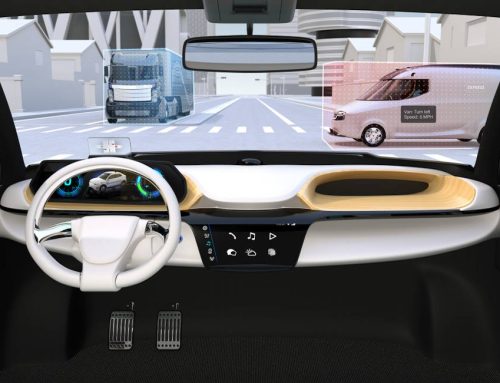Law enforcement officers play a vital role in maintaining public safety, often putting themselves in dangerous situations. That includes actions they take when in their patrol car, including high-speed pursuits or urgent responses. ADAS (Advanced Driver Assistance Systems) can help officers more safely do their job, including helping them prevent lane deviation that can lead to crashes.
Because they dedicate their lives to making communities safer, law enforcement officers encounter far more challenges and risks than other drivers. Officers must often multi-task quickly. They also must drive during the day and night in all kinds of weather.
ADAS systems can help law enforcement officers behind the wheel, giving them a system that works with them, helping to prevent lane deviation and warning them of potential collisions. These systems can minimize risks and improve outcomes for law enforcement personnel.
Why Law Enforcement Needs ADAS Systems
Finding ways to avoid collisions and crashes is of utmost importance for law enforcement agencies. Technology plays a key role in giving officers support and protection, particularly when they are behind the wheel. It’s an important focus for all departments, as automobile crashes have become the third leading cause of officer fatalities in the past decade (after illness and being shot).
To address crash risks, implementing collision avoidance technology is a paramount concern. In addition to lane department warnings, systems from Mobileye identify and warn officers about forward collision risks, following time, excessive speed, and pedestrian hazards. These alerts can provide officers with the extra seconds they need to prevent a collision or minimize its severity.
In addition to saving officers’ lives, ADAS systems can also save law enforcement agencies from the high costs of crashes, even those that do not result in injuries to officers. These include not only the high cost of repairing a vehicle but also the cost of purchasing new replacement vehicles.
How ADAS Systems Prevent Lane Deviation
An estimated 60% of crashes start with accidental lane departure. By using systems designed to prevent lane deviation, fleets can reduce the risk of accidents. For law enforcement agencies, it can mean the difference between escaping a situation safely or suffering an injury due to a crash.
ADAS systems use sensors to continuously monitor the position of the vehicle within its lane. These sensors track the lane markings on the road, including solid and dashed lines. If the vehicle starts to deviate from its lane without the driver engaging the turn signal, the system recognizes it as a potential lane departure.
When a lane departure is detected, the system immediately activates visual and audible alerts to notify the driver. The purpose of the alert is to grab the driver’s attention and prompt them to take corrective action to stay within the lane. By providing timely warnings, the system aims to prevent the driver from inadvertently drifting into adjacent lanes or off the road.
These systems also act as a constant reminder to officers to remain attentive and focused on the road. They also have customizable settings that allow law enforcement agencies to use the systems in a way that best works for their fleet and officers.
Lane Departure Warnings and Law Enforcement Officers
Because of the unique challenges they face, a lane departure warning system is particularly helpful to law enforcement officers.
For example, police officers often work long hours and may experience fatigue, especially during overnight shifts or extended patrols. Lane departure warnings can provide an extra layer of protection by alerting officers when they unintentionally drift out of their lane. These alerts can help combat the effects of fatigue and prevent collisions caused by drowsiness.
Law enforcement officers also face numerous distractions while on duty, such as using in-vehicle technology, responding to radio calls, or monitoring multiple surveillance screens. Lane departure warning systems can help officers maintain their lane position and avoid inadvertent lane departures.
These systems also can provide real-time alerts in high-stress situations, such as during high-speed pursuits or urgent response situations. During these moments, it is crucial to maintain control of the vehicle and stay within designated lanes. These systems also provide additional support from officers trying to navigate road conditions in inclement weather.
With systems that prevent lane deviation integrated into their vehicles, police officers can benefit from an extra layer of safety and assistance in maintaining proper lane discipline. They contribute to the overall safety and well-being of law enforcement officers while they perform their crucial duties on the road.









